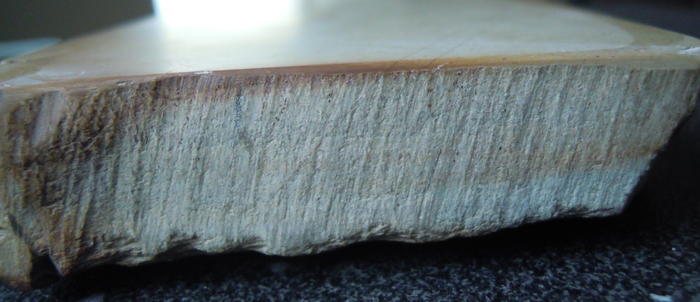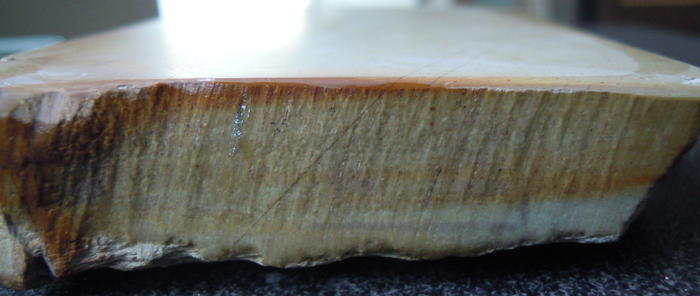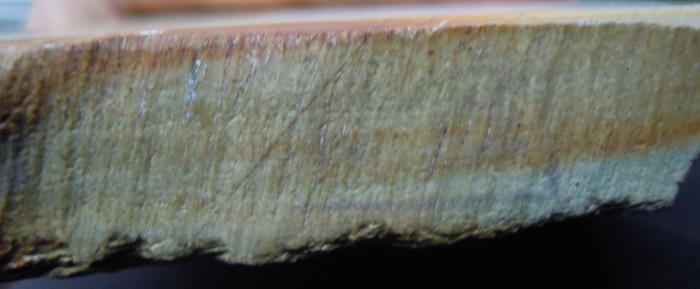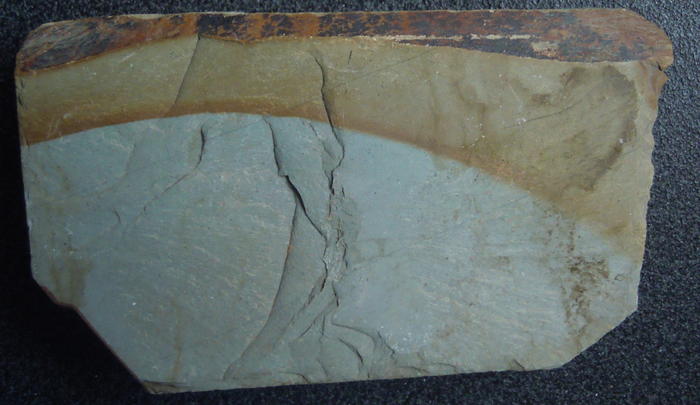Results 1 to 7 of 7
-
01-12-2014, 09:45 PM #1
 Are there known Ozuku stamps on the side of the stone?
Are there known Ozuku stamps on the side of the stone?
Hi,
One of my Ozuku's IMO seems to have faint stamp markings on the side of the stone, only visible when wet,
could this be right? Are there Ozuku's with stamps on the side or am I imagining things?...



-
01-13-2014, 10:39 AM #2

It seems like MARUKA stamp.
Check this thread for examples: http://straightrazorpalace.com/hones...ps-2013-a.html
-
01-13-2014, 12:17 PM #3

As far as I know, oozuku stones were never stamped. If there is a maruka stamp on the stone, it's a fake, or a nakayama. Or both. That being said, some sellers were also stamping their stones, but I'm not sure if their stamps are worth something today. Your stone indeed does appear to have some kind of stamp on it.
-
01-13-2014, 01:41 PM #4

Fikira
I agree with Vasilis to some degree. The awasedo sharpening stone business in Japan up until the 1960s was not a sexy business, very little profit and a lot like farming, a way to make a living. Also being a trade, mining tended to be a multi-generational business from father to son and in Japan in those days is was unusual to break out of tradition. So the business continued but the ego-flash-publicity grabbing attention was never part of the awasedo business and in most cases stones were judged on performance rather than from which mine they came from. I speciliaze in vintage old stock and after having handled thousands of stones I can attest that the only mine that ever faintly hinted of it origin as a stamp on the stone was from Nakayama, and the owner only did this with a select grade of stones and not every one. In fact Kato-san who owned the mineral rights (not the property) was just a miner, not a retailer and hardly even a wholesaler. Just a miner.
I suspect that he began to mark his stones with the Maruka ink stamp in black some time after WW2, and it wasn't until the late 1950s or early 60s that he created the other stamps like the razor hone stamp. All of the well know and documented mines were closed before WW2 or shortly after and most of those had closed before 1920, except for Ohira near Kameoka in the Tamba area and Ohira did not mark their stones until the 1970s if I am not mistaken. It was only the wholesalers who ink stamped the stones.
Now this is not to say that your stone is not an Ozuku stone, it might be so. I am only saying that Ozuku closed in the 1920s and that they did not mark their stones with an ink stamp that read "Ozuku".
There are still as reported storage lockers with large quantities of old mined stone here and there around Kyoto, stone that was mined a hundred years ago, purchased wholesale from the miners or in the case of the Hitomi family from one of their own mines. Hatanaka family who were not miners themselves but were the favored wholesaler of the Nakayama raw stone has storage and in it they have stone from Ozuku, Ohira and most likely the other mines too that was piled up over the years from buy outs of closed dealers and who knows what else made by his father and grandfather. Hatakana can stamp their stones with their own company logo and if they want to they can stamp it with Ozuku if they want or Shinden or any other closed up mine. There are no copyrights on the names of the mines themselves because the mines in effect do not exist, they are closed. It is the wholesalers who copyright their own particular ink stamp logo for their company, and any reference to a particular mine ink stamp or word of mouth is an attribution based either on their knowledge of stones, their company records if they exist as to which lot was purchased directly from a particular mine, or some wild guess.
The wholesalers of 2014 are at least one if not two generations removed from the days of the actual mining activity, most have never been in a mine as a worker. Kimura-san who died last year at a ripe old age was a wholesaler but he also owned a mine, Yamamoto-san is a wholesaler who owned 2 different mines and survived a mine cavein. But the majority of wholesalers are just retailers including Hatanaka-san who took over from his father who himself was just a flatlander businessman. His father was the one who became a business partner with Kato-san in the 1960s and who eventually purchased Kato's business lock, stock & barrel including those copyrighted ink stamps. The Hatanaka family did not purchase the site of the mine and this is why you will begin to see soon as it is happening in Japan already, ink stamped stones that read Nakayama. Not the Maruka stamp but just literally NAKAYAMA.
So beware of stamps, learn to judge stones on their own merits and try to buy from sellers who will facilitate refunds or trade-ins.
good luck,
AlexLast edited by alx; 01-13-2014 at 01:51 PM.
-
-
01-13-2014, 03:43 PM #5

Very interesting stuff!
I will never know the truth but my thoughts about being a "real" stamp is confirmed,
the new stamp on the top was very obvious that is was new, but I know it is a fact that stamps aren't associated with the time it is mined, it is just stamped by the wholesaler, whoever and whenever... The stamp on the top is removed because it really needed to be flattened, but that strange thing on the side, who knows what is is...
The most important thing is that it is a nice hone!
I do think it created a nice thread about history though!
Would you say the kawa is typically "Ozuku"?

Thanks again!
Kindest regards
-
01-13-2014, 06:31 PM #6

Trying to figure out the particular mine from just photos is like a rabbit hole. I agree with the others and similar threads that if it works that is all that counts. Testing out several stones at the same time with your own equipment is the best way to buy stones, but one at a time can lead to some nice discoveries.
good luck,
Alex
-
01-13-2014, 08:43 PM #7


 1Likes
1Likes LinkBack URL
LinkBack URL About LinkBacks
About LinkBacks






 Reply With Quote
Reply With Quote

